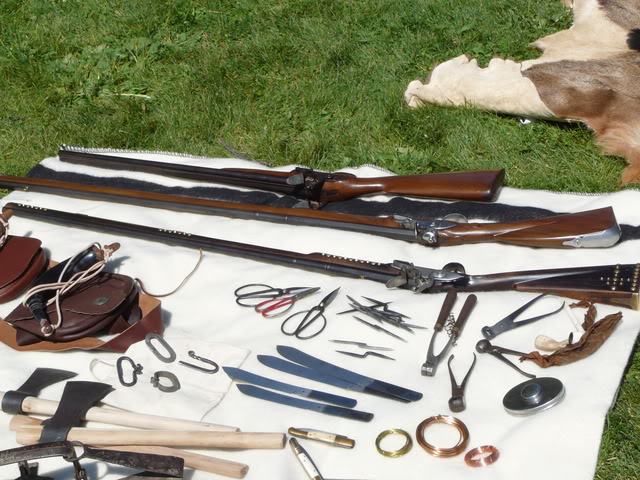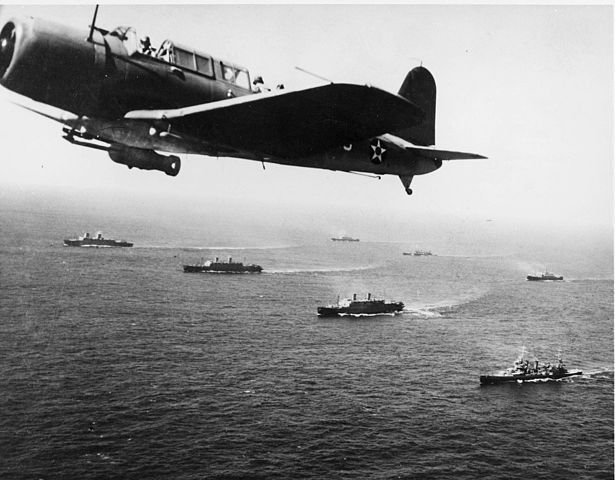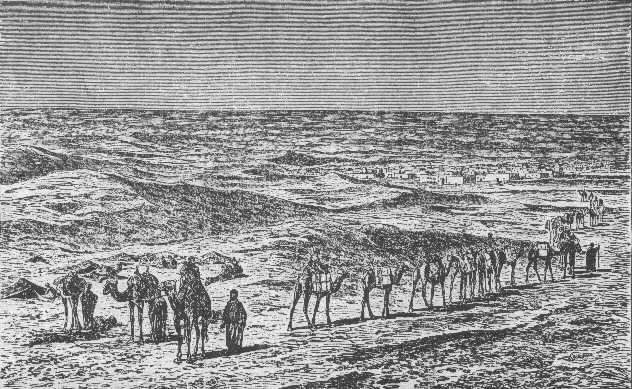TRADE GOODS
I’m always thinking about specifics of what might be on a caravan. The town that is the main focus in my AD&D campaign has frequent caravans, and as yet, I have not needed to know what is in them. In case it every comes up, I wanted ideas. I put together the following list to give me ideas for general categories for developing tables.
WATER: In general, this would be a local resource, but in a desert scenario, water could be worth its weight in gold. Merchants will carry enough water to get to the next known source of water.
Adventurer/Explorer: Some merchants will be adventurer merchants seeking to expand the trade routes, or find something new to trade. Think Marco Polo.
SALT: Whether mined from a salt flats, a salt mine, or recovered by evaporation from the ocean. It is a key preservative in pre-industrial societies. Salt does not go bad. Roman soldiers were paid in salt.
Spices: All various kinds. More exotic spices from more distant lands cost more per pound or ounce than local spices. Most spices have a long shelf life if kept dry.
Produce: Fruits and vegetables. Only fresh would be available locally within about 100 miles or so. Beyond that only dried fruits and vegetables, or pickled. Dates, grapes, and figs were common dried fruit that formed into blocks for easy transport and had a relatively long shelf life in a dry climate.
NOTE: Preservation methods for transport are the same methods used to help people make it through the winter or whatever time is between growing seasons.
Meat: As with produce, fresh meat, including fish would usually only be transported about 100 miles or so. Beyond that, dried, salted, pickled or otherwise preserved meats could easily be transported over longer distances. “On the hoof” is the best way to transport fresh meat the farthest, such as with the cattle drives of the American west.
NOTE: Preservation methods for transport are the same methods used to help people make it through the winter or whatever time is between growing seasons.
Honey: It does not spoil and it has anti-bacterial properties. If it crystallizes, heating returns it to liquid. Honey from ancient tombs has been liquefied and was still good.
Gaming Hooks: Supply will be limited by the supply of various bees, bumblebees, wasps, etc. and flowering plants. A hive of giant bees, etc. could be used by some society of humans that had special tools or magic to allow it. Perhaps some giants could be beekeepers and there be some form of trade with other races.
Raw Materials: In general, raw materials are first shipped to where they are made into an intermediate or final product. An example of an intermediate product is ore processed into ingots, wool spun into yarn, or logs processed into lumber. Sometimes two or more raw materials are combined to form an intermediate material, such as charcoal or coal and iron ore to make iron ingots. Some craftsmen/tradesmen, such as blacksmiths might process their own ore for further use, or be specialized in processing ore for others.
Intermediate Products: Materials in a state that further products can be made from them. Iron ingots are made into weapons and armor, yarn from wool is spun into cloth, etc. Some intermediate products, may be made into further intermediate products. Rough cut lumber may be formed into various sizes and quality of boards for specific uses. Spun cloth may be died and cut to make clothes or other items.
Textiles: Raw materials include wool or bundles of harvested plants. Clothing, rugs, tapestries, table clothes, napkins, towels, rope, armor, paper, etc.
NOTE: Related to textiles will be the raw materials.
- Plant based: Cotton, linen, flax, jute, hemp, bamboo, straw, grass, rush, sisal
- Animal based: Wool, silk (cocoons of silkworms)
Plant textiles: SOURCE:
Grass, rush, hemp, and sisal are all used in making rope. In the first two, the entire plant is used for this purpose, while in the last two, only fibers from the plant are utilized. Coir (coconut fiber) is used in making twine, and also in floor mats, doormats, brushes, mattresses, floor tiles, and sacking.
Textiles involve some form of spinning into thread and weaving and/or braiding.
Straw and bamboo are both used to make hats. Straw, a dried form of grass, is also used for stuffing, as is kapok.
Fibers from pulpwood trees, cotton, rice, hemp, and nettle are used in making paper.
Cotton, flax, jute, hemp, modal and even bamboo fiber are all used in clothing. Piña (pineapple fiber) and ramie are also fibers used in clothing, generally with a blend of other fibers such as cotton.
Nettles have also been used to make a fiber and fabric very similar to hemp or flax. The use of milkweed stalk fiber has also been reported, but it tends to be somewhat weaker than other fibers like hemp or flax.
Acetate is used to increase the shininess of certain fabrics such as silks, velvets, and taffetas.
Seaweed is used in the production of textiles: a water-soluble fiber known as alginate is produced and is used as a holding fibre; when the cloth is finished, the alginate is dissolved, leaving an open area.
Lyocell is a man-made fabric derived from wood pulp. It is often described as a man-made silk equivalent; it is a tough fabric that is often blended with other fabrics – cotton, for example.
Fibers from the stalks of plants, such as hemp, flax, and nettles, are also known as ‘bast’ fibers.
Wooden goods: Raw timber, i.e. logs, and lumber are the simplest. Finished products include tables, chairs, plates, mugs, shields, hafts for spears and javelins, staves for bows, barrels, arrows, lumber (planks, beams, etc.), carvings. Types of wood, from the common to the rare and exotic. Wooden trinkets, like lacquered necklaces, tableware, handles, spinning wheels, looms, etc.
Metal goods: Unprocessed ore and ingots are the base goods. Finished goods include arms and armor, copper goods, tin goods, bronze goods, tableware (of various quality from copper, tin, bronze, pewter, silver, gold, perhaps electrum or platinum), coinage (ancient coinage bound to a collector(s), or coinage for a payroll for troops, workers (miners, lumbermen, builders, etc.), tribute, etc.), Jewelry of all sorts. idols, icons, craft goods, collectibles, etc.
NOTE: Coins can be counterfeited using base metals. Wizards can use fool’s gold and the surprise comes when the spell expires….
Antiques: From all the dungeons and ancient battlefields and ruins, there can be all kinds of antiquities. These would be many of the same things that are recognizable for what they are, or items that no one living knows what it is. Go to a flea market or estate sale at an old farm and look at the strange gizmos. It is amazing what kinds of hand tools our forebears used and to look at them, it is not always obvious what they are. Get an old timer to explain some of it.
NOTE: Forgery will be an issue. Adventure hook, trader is swindled, or trader is the swindler of his clients, etc.
Art: This can be antiques or current carvings, statues, monuments, paintings, tapestries, rugs, etc.
Stone: Statuary, construction blocks. Usually construction blocks are not hauled very far. Some prince or wealthy patron wanting a rare marble might ship it overland in a long line of wagons running miles. What an adventure hook. Slate for chalkboards, roofing tiles, etc. Chalk for writing or building, etc.
Gems, jewelry, precious stones: These can all be transported by a single poorly dressed man as he moves between venues. A fortune for trade could be had. How does he pull the switcheroo to his respectable clothing to make a legitimate trade is another hook. Counterfeits and forgeries would also be a possibility.
Slaves: If you have slaves among the humans, elves, dwarves, etc. There can be long caravans of them. Humanoids, such as orcs, like slaves to do the jobs they hate. Humans could make slaves of war captives of other humans, or orcs, etc.
Exotica: Rare items, ingredients, metals, wood, animals, etc.
Circus/Sideshow/Carnival: Group of performers travelling town to town on their own or as part of a larger caravan.
Anything you use on a daily basis had to come from somewhere. In the ancient and medieval world people made due with what was available locally, within about 20 miles. Trade developed as a means of acquiring something that is needed, useful, or desired from AWAY, i.e. non-local. Most food was local. Most building materials were local. Only large or special construction projects were not local.
Any list of professions will suggest products. If you create a town or city, the occupations of the inhabitants will indicate what they have to trade and suggest items they import.
Only very small towns or cities can be self sufficient. After a certain size, neighboring towns, villages, farms and herds are needed to support it. Rome imported grain from Egypt, etc.
In the ancient world of pre-history, there is a lot of evidence of the tin trade over many thousands of miles. As the easily accessible tin petered out, bronze became scarce. I read an article online that says some theorize that the iron age was helped along by necessity. That is, the scarcity of tin to mix with copper to make bronze was the necessity to figure out how to efficiently heat iron ore enough to separate it from the rest of the material so that it could be worked.
Type of Materials/Goods in a Caravan or on a Ship
- Raw Materials
- Intermediate Materials
- Finished Goods
Raw Materials
- Food
- Livestock – Sheep, goats, pigs, cattle, fowl (chickens, ducks, geese, etc.) Driven by drovers/herders.
- Fresh Food – Fruits, Vegetables, Meat, Fish, Eggs of various fowl., honey. Carried in crates or baskets, or perhaps jars.
- Dried Food – Fruits, Vegetables, Meat (jerky/pemican), Fish. Can be wrapped in paper or cloth or stored as is in kegs, barrels, or crates.
- Grain – Oats, Wheat, Rye, Rice. Usually transported in sacks or barrels. Can be used for seed or eating.
- Processed Food – Flour of various grains, bread, crackers, pickles, pickled meat or fish
- Logs
- Stone/Rock
- Ore
- Tin
- Copper
- Iron
- Silver
- Gold
- etc.
- Fibers
- Wool/Silk
- Plant fibers for spinning/weaving (Hemp, sissal, etc.)
- Animal By Products
- Ivory
- Bone
- Hides (From butchered or trapped animals, i.e. cows or beaver, for ex.)
- Horn
Intermediate Goods
- Rough cut lumber
- Ingots of various ores
- Spun fibers
- Woven cloth – undied and uncut
Finished Goods
- Wood – Furniture, Weapons, Tools, Shields, Musical Instruments, cups, mugs, plates, etc.
- Fibers – Rope, Yarn, String, Thread, Bolts of colored cloth, clothes, rugs, tapestries, curtains, etc.
- Metal – Needles, weapons, armor, utensils, tools, hinges, locks, chains, coins, ingots, cups, mugs, plates, eating utensils, etc.
- Ivory – Carved items. As inlay in other items, such as a table top.
- Bone – Needles, corsets, inlay in wooden items.
- Horn – Bows, drinking horns, musical/hunting/war horns.
- Glass – Windows, containers, lab equipment. (What level of glass technology is in your fantasy campaign?)
- Ceramic/Clay – glasses, mugs, plates, jars, etc.
Containers
- Keg – Dry or liquid storage.
- Barrel – Dry or liquid storage.
- Sack – 50 pounds
- Basket – Bushel
- Crate – 20 – 50 pounds
- Jars
- Amphorae – Large jars for transporting olive oil or wine in the ancient world.
- Chests
- Coffers
- Bags
See my article on Caravans & Pack Animals and Loot Carriers for more ideas on how goods might be transported.
EDIT: I have two PDFs on DriveThruRPG: The Best Copper Seller: Caravans & Trade and Businesses In Settlements.





